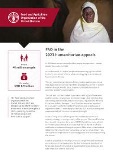Publications
.tmb-th600x450.jpg?Culture=en&sfvrsn=f5d3a839_6)
Northeastern Nigeria: Humanitarian Response Plan 2024
04/2024
In 2023, the levels of acute food insecurity in northeastern Nigeria were comparable to those reported during the peak of the crisis in 2016/17.

Nigeria: DIEM – Data in Emergencies Monitoring brief, round 6
03/2024
This Data in Emergencies Monitoring (DIEM-Monitoring) brief shares the results of a sixth-round assessment conducted in January and February 2024 in Nigeria.

Nigeria: DIEM – Data in Emergencies Monitoring brief, round 5
01/2024
This Data in Emergencies Monitoring (DIEM-Monitoring) brief shares the results of a fifth-round assessment conducted in October 2023 in Nigeria.

Northeastern Nigeria: Tom Brown – Local supplementary food for improved nutrition
12/2023
Tom Brown is a supplementary food powder made from a blend of locally available roasted soya beans, groundnut, guinea corn, maize, millet, fish powder and local spices.
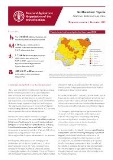
Northeastern Nigeria: Adamawa, Borno and Yobe states. Response overview (November 2023)
12/2023
The latest Cadre Harmonisé analysis (November 2023) indicate that over 26.5 million are projected to be in high acute food insecurity (June-August 2024) across 26 states analysed in Nigeria and in the Federal Capital Territory, including 4.38 million in Adamawa, Borno and Yobe, if appropriate assistance is not provided.
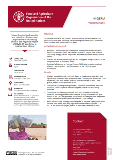
Nigeria: Project Highlights - OSRO/NIR/201/JPN
11/2023
The Government of Japan contributed USD 623 129 to FAO's project entiteld "Strengthening food security and nutrition of vulnerable populations to increasing conflict and negative impact of COVID-19 pandemic in northeastern Nigeria".
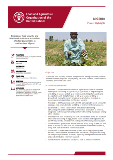
Nigeria: Project Highlights - OSRO/NIR/200/GER
11/2023
The Federal Government of Germany contributed USD 5 million to FAO's project entitled "Emergency food security and livelihood assistance to conflict-affected populations in northeastern Nigeria".

Northeastern Nigeria: Adamawa, Borno and Yobe states – Response overview (September 2023)
09/2023
The latest Cadre Harmonisé analysis (March 2023) conducted in 26 out of Nigeria’s 36 states, as well as the Federal Capital Territory, estimates that 24.8 million people countrywide were projected to be acutely food insecure during this year’s lean season
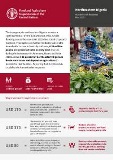
Northeastern Nigeria: Humanitarian Response Plan 2023
04/2023
The insurgency in northeastern Nigeria remains a significant driver of the humanitarian crisis. Severe flooding across the country in 2022 devastated crops and livestock.
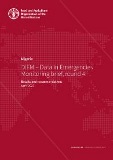
Nigeria: DIEM – Data in Emergencies Monitoring brief, round 4
04/2023
This Data in Emergencies Monitoring (DIEM-Monitoring) brief shares the results of a fourth-round assessment conducted between February and March 2023 in Nigeria.

Nigeria: DIEM – Data in Emergencies Monitoring brief, round 3
12/2022
This Data in Emergencies Monitoring (DIEM-Monitoring) brief shares the results of a third-round field assessment conducted between September and October 2022 in Nigeria.

Monitoring food security in food crisis countries with conflict situations
12/2022
This report provides an update on the acute food insecurity in countries and territories that have the world’s highest burden of people in need of emergency food, nutrition and livelihood assistance as a result of protracted conflict combined with other factors.

Nigeria: Urgent call for assistance
11/2022
Severe floods across Nigeria during the recent agricultural season (April–October) have had a devastating impact on livelihood assets, food stocks and yield prospects for the main harvest, disrupting people’s lives and livelihoods.

Enhancing nutrition in emergency and resilience agriculture responses to prevent child wasting: FAO's child wasting prevention action plan (2023–2024)
11/2022
As part of the United Nations Global Action Plan on Child Wasting, FAO requires USD 500 million to implement its action plan to prevent child wasting (2023–2024) in the 15 most-affected countries.
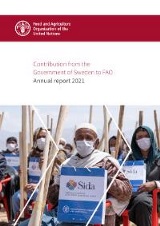
Contribution from the Government of Sweden to FAO: Annual report 2021
10/2022
In 2021, the Government of Sweden, through the Swedish International Development Cooperation Agency (Sida), contributed SEK 94 million (USD 11.08 million) to the Food and Agriculture Organization of the United Nations (FAO) emergency and resilience programme.
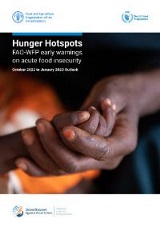
Hunger Hotspots: FAO-WFP early warnings on acute food insecurity (October 2022 to January 2023 Outlook)
09/2022
The Food and Agriculture Organization of the United Nations (FAO) and the World Food Programme (WFP) warn that acute food insecurity is likely to deteriorate further in 19 countries or situations – called hunger hotspots – during the outlook period from October 2022 to January 2023.
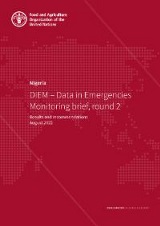
Nigeria: DIEM – Data in Emergencies Monitoring brief, round 2
09/2022
This Data in Emergencies Monitoring (DIEM-Monitoring) brief shares the results of a second-round field assessment conducted between June and July 2022 in Nigeria.

Special Fund for Emergency and Rehabilitation Activities (SFERA): Annual Report 2021
07/2022
This annual report provides a brief description of the major operations initiated with the Special Fund for Emergency and Rehabilitation Activities (SFERA) for the 12-month period ending 31 December 2021. The report contains financial data for this period, as well as data since the Fund became operational.
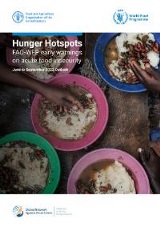
Hunger Hotspots: FAO-WFP early warnings on acute food insecurity: June to September 2022 Outlook
06/2022
The Food and Agriculture Organization of the United Nations (FAO) and the World Food Programme (WFP) warn that acute food insecurity is likely to deteriorate further in 20 countries or situations (including two regional clusters) – called hunger hotspots – during the outlook period from June to September 2022.

